The Aral Sea coast
It is difficult to believe that once there was a real sea in place of a hot and arid desert, and which was the fourth largest in the world. Large fishing boats sailed on it, its waves beat against the coastal rocks, and hundreds of tourists came to its beaches to swim and sunbathe.
On the one hand is Karakum, on the other hand – Kyzylkum, and between them is the Aral Sea, or we should say its bottom. Now this place is called Aralkum or a new desert, and it occupies 54 thousand square meters. Dozens of ships are moored here forever, slowly turning into a rusting cemetery. Passing from the ship to the longboat, you realize that each ship had its own history, its own captain. Now it is the ships cemetery, resembling a dystopian landscape.
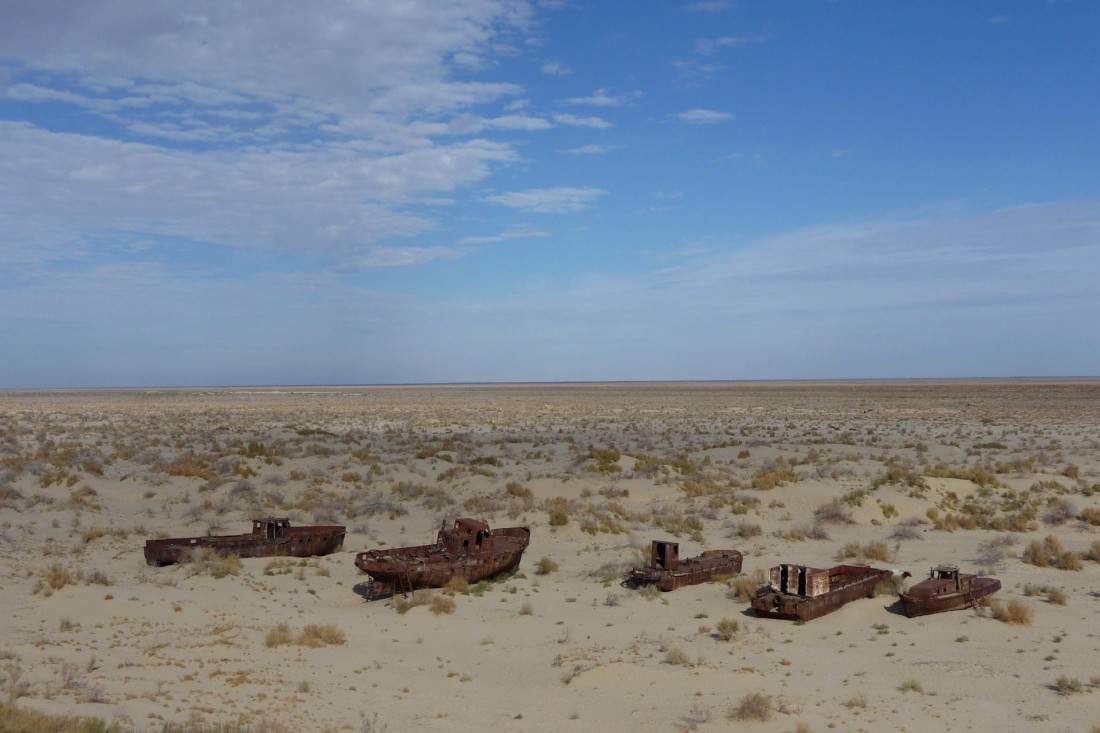
All this can be seen in the city of Muynak, on the southern shore of the Aral Sea. Half a century ago, this place was the largest port in Uzbekistan. Here fishing vessels came, the largest fish plant worked, and numerous beaches with places to relax were very popular. Muynak was surrounded by water and could be reached by plane or ship. The Aral Sea has moved almost 200 km away, leaving a lifeless desert.
The sea began to dry up in 1970, and by 1980, its level had fallen so much that it was divided into two parts: the Great and Small Aral. NASA satellite images clearly show the drying process of the Aral Sea. By 2014, only 10% of the sea remained, and the salinity of the water increased from 14 to 100 grams per 1 liter. This has led to the disastrous consequences. The climate of the Aral Sea region has changed from moderate to sharply continental.
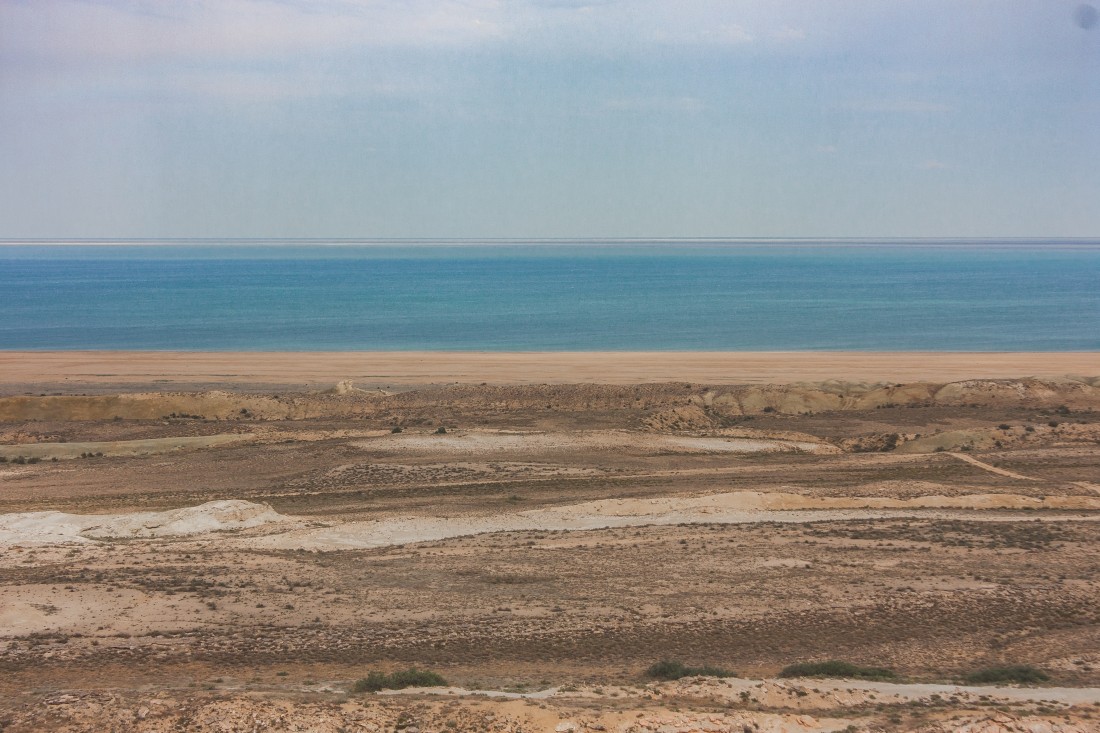
The reasons for the drying up of the sea are not exactly known. At one time, there was a widespread version about the improper use of water from the Amu Darya and Syr Darya for the irrigation. Later the research on the dried-up area of the bottom showed that there were medieval settlements of the XII-XVI centuries. Residential buildings, craft workshops, burials, and household items were found. The scientists have established that the sea was here long before the settlements, which disappeared because of flooding. The archaeological site was named Aral-Asar.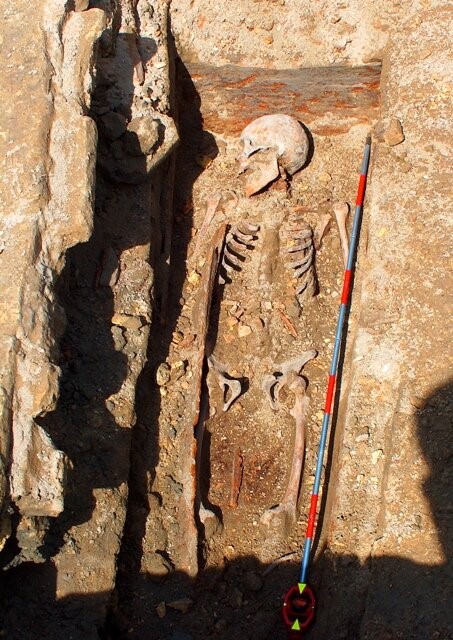
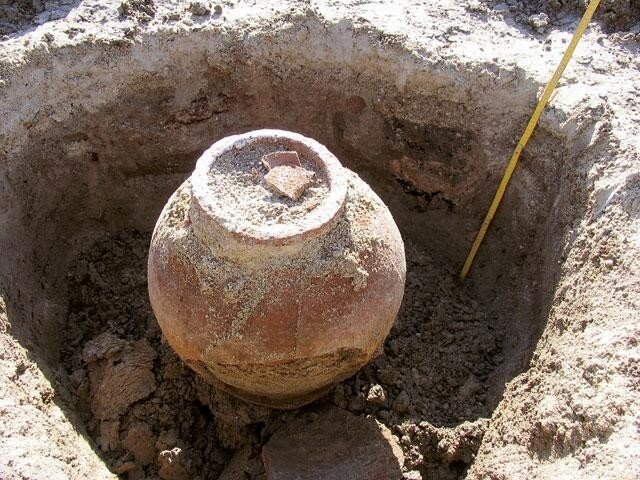
The bottom of the Aral Sea is mysterious; some scientists compare it with Atlantis. In addition to the ancient settlements on the sea floor, the geometric figures were also discovered, which many people have taken for the message of an extraterrestrial civilization or ancient writing. They are located on a huge area – almost 20 square meters, and represent parallel lines that create certain drawings and symbols.
You can see mysterious drawings, poisonous salt marshes and what is left of the Aral Sea by the helicopter. To do this, you will have to fly to the West in the direction of the Big Aral Sea. Below you can see endless Martian landscapes, thousands of hectares of white salt sediments where no life is possible. From time to time, you may come across rows of saxaul, which show that this is the work of a man. Surprisingly, with great difficulty, the Uzbek people, trying to prevent the Aral disaster, plant saxaul in the typical desert, creating green oasis.
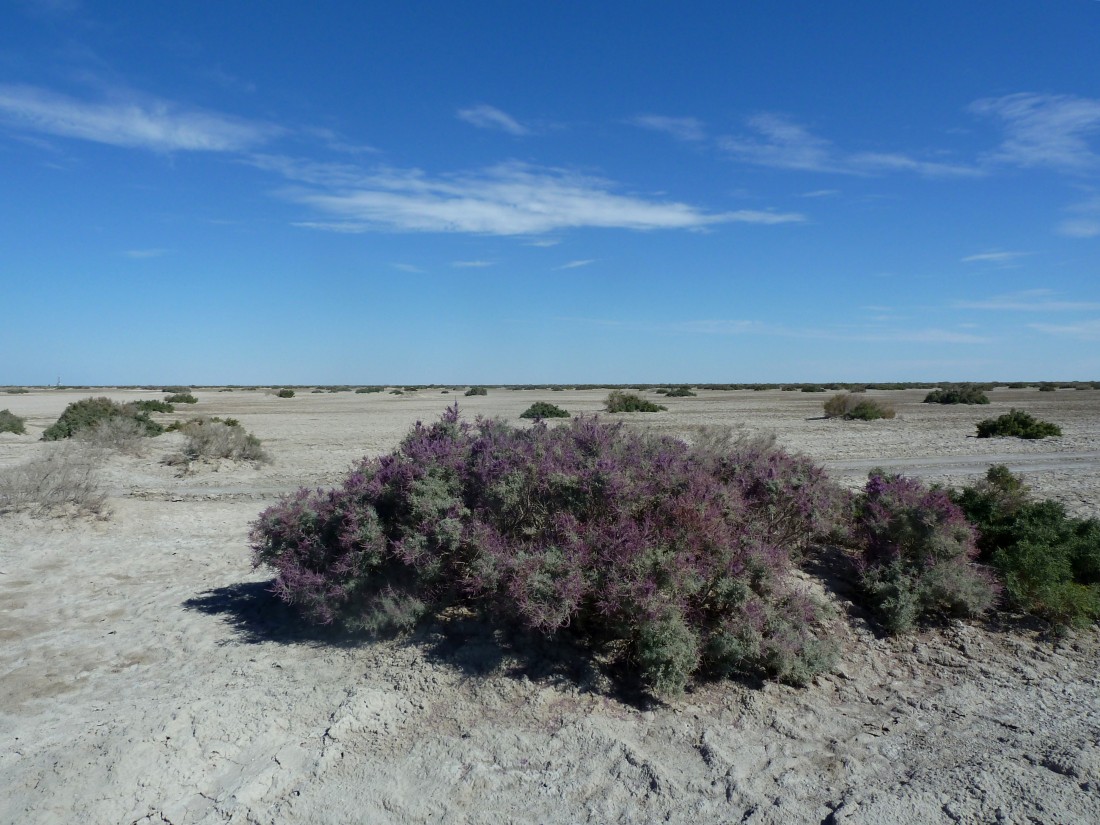
Flying up, you can see the sea, once the cleanest and most transparent sea in the world. Near the Aral Sea, anyone can stay in a Yurt camp and feel the color of the Karakalpak culture. In addition, in the Muynak district, there is the island of Rebirth – the most closed and mysterious place in the Aral Sea.
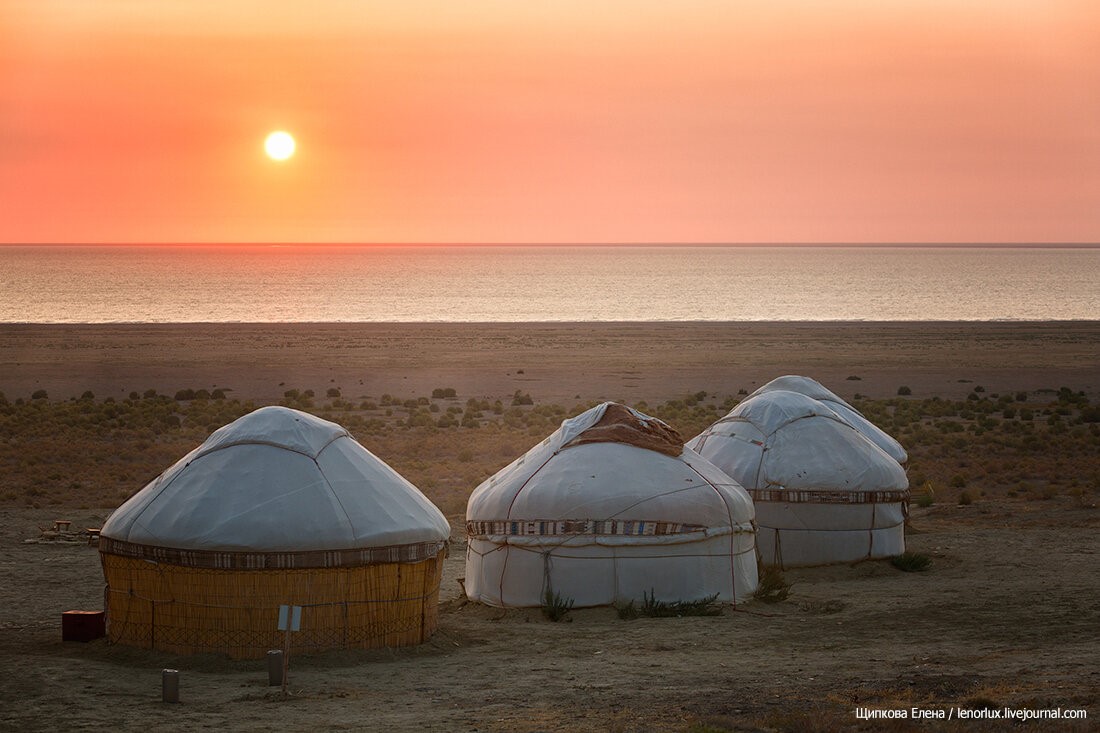
Over the past few years, Muynak has been transformed. In addition to the once-lost seaport, the area has something to surprise the visitors of the country. For example, these are the delicious Karakalpak cuisine, hospitality, interesting national traditions and just good people, who know firsthand what it means to cherish and appreciate the simplest thing that a person has – water!
Leave a comment
By logging in, you agree to the processing personal data
See also
Workhours: 9:00-18:00, Mn-Fr
For any questions
Uzbekistan


 UZB
UZB RUS
RUS JPN
JPN ARA
ARA FRA
FRA CN
CN DE
DE POR
POR ESP
ESP TUR
TUR ITA
ITA HIN
HIN MAL
MAL
A comment